vyv_cox
Well-Known Member
Interesting photos, I look forward to seeing their condition when you have withdrawn them. Do I understand that you have been supplied 8.8 galvanised bolts? I am more used to seeing 8.8s in their natural colour - black..
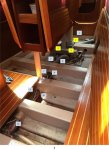

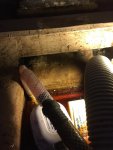

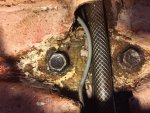
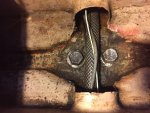
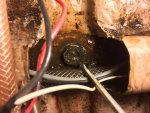
Someone else did this a while back and said afterwards, oh, when I got them out it was only surface rust in the heads, If I was doing it agsin I wouldnt, or words to that effect.Keel Bolts - more work....Did some cleaning of some of the existing bolts...:
First diagram shows the bolts layout...
View attachment 61858
there are 11 bolts:
Bolt 1 is a smaller bolt...looks like its mainly for grounding
Bolt 2 , 3, and 4 are covered by fiber glass...will need to work on that when the boat is hauled. Bolts 3 and 4 are under a table support that needs to be drilled or cut to gain access.
Bolts 5,6 ...7,9 ... 9,,10 are paired and what I have cleaned up so far
Bolt 11 if most aft, somewhat cleaned, but still needs more cleaning...
After cleaning the area, chipping protective material off bolt heads, I used a drill with wire brush to clean the metal as best I could.
Pictures:
Bolt 1 and 2
View attachment 61859
Bolts 3 and 4
View attachment 61860
Bolts 5 and 6
View attachment 61861
Bolts 7 and 8
View attachment 61862
Bolts 9 and 10
View attachment 61863
Bolt 11
View attachment 61864
The bolt conditions don't actually look that bad, and are not leaking...
It looks like one bolt washer is partially gone (#10)
So wondering what others think of these, how they look, worth trying to change or leave alone!?
I can't tell how the bolts are which are fiber-glassed over.
Another note: These bolt heads appear to be slightly tapered! I have seen some other posts that mention having to grind these...will a standard socket not work correctly?
Is the grinding just to square rusted parts?
Is there a special socket set that is actually tapered?
Starting early with all this, in case I found something ahead...will have time to plan!
Boat haul is in April...so some time to plan things!

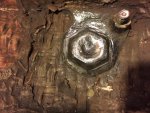
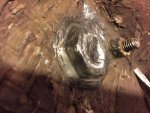
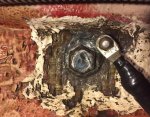
Thanks for the additional info
Definately would be using my newly purchased torque wrench...bolts are galvonized....planned to put some marine anti seize. So, thinking to set the torque setting at about 125 ft lbs. Thinking is this would take into account the reduction of torque due to these coatings
I changed the keel bolts on my Moody which were mild steel. I was surprised at how short they were, only 5 inch or so. I made enquires at SKF the Swedish factory in Gothenberg that specialize in Mild steel bolt connections. They have a good web page which states that for a blind bolt insert into a solid iron metal the depth of penetration need only be around twice the diameter of the bolt. (slightly less, the web page gives something like 1 5/8 of the diameter of the bolt but I cannot remember the exact figure)
I am still unhappy about bolt on keels to a GRP hull. In the past keels were bolted to wood hulls with a deadwood spacer. The wood will of course compress when torqued up and will actually expand when launched. Not so with GRP which will crush if over-tightened and goodness knows what happens to those co-polymer molecule thingies when stress due to sailing bends them around a bit.


